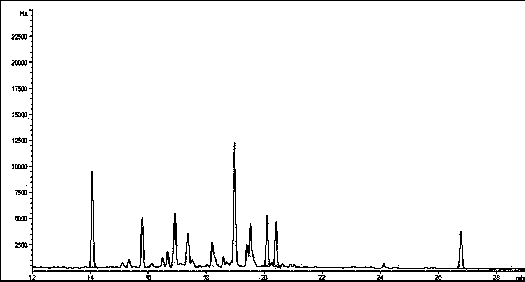Method for determining residues of chlorothalonil, captan, captafol and folpet in vegetables and fruits
A technology of chlorothalonil and captan, which is applied to the detection and application of pesticide residues, can solve problems such as instability and inability to obtain accurate and reliable quantitative results, and achieve accurate and reliable results
- Summary
- Abstract
- Description
- Claims
- Application Information
AI Technical Summary
Problems solved by technology
Method used
Image
Examples
Embodiment 1
[0029] Unless otherwise stated, the percentages used in the present invention are all percentages by weight.
[0030] A method for determining chlorothalonil, captan, captafol and folpet residues in fruits and vegetables, the specific steps are as follows:
[0031] 1. Sample preparation:
[0032] Cut the leaf vegetable samples into 2-3 cm sections, and cut the fruit samples into 2-3 cm long, wide and high pieces.
[0033] 2. Treat the sample with phosphoric acid:
[0034] Accurately weigh 100g of sample, add 50g of 5% phosphoric acid solution, crush and mix to prepare a uniform sample.
[0035] Since the four pesticides chlorothalonil, captan, captafol and folpet are unstable in an alkaline environment, and they will degrade when the matrix samples such as zucchini, rapeseed, radish, cauliflower and peach are broken, so in The method of adding phosphoric acid was used in the sample preparation, which avoided the loss of four kinds of pesticides in the process of pulverizing...
PUM
 Login to View More
Login to View More Abstract
Description
Claims
Application Information
 Login to View More
Login to View More - R&D
- Intellectual Property
- Life Sciences
- Materials
- Tech Scout
- Unparalleled Data Quality
- Higher Quality Content
- 60% Fewer Hallucinations
Browse by: Latest US Patents, China's latest patents, Technical Efficacy Thesaurus, Application Domain, Technology Topic, Popular Technical Reports.
© 2025 PatSnap. All rights reserved.Legal|Privacy policy|Modern Slavery Act Transparency Statement|Sitemap|About US| Contact US: help@patsnap.com



